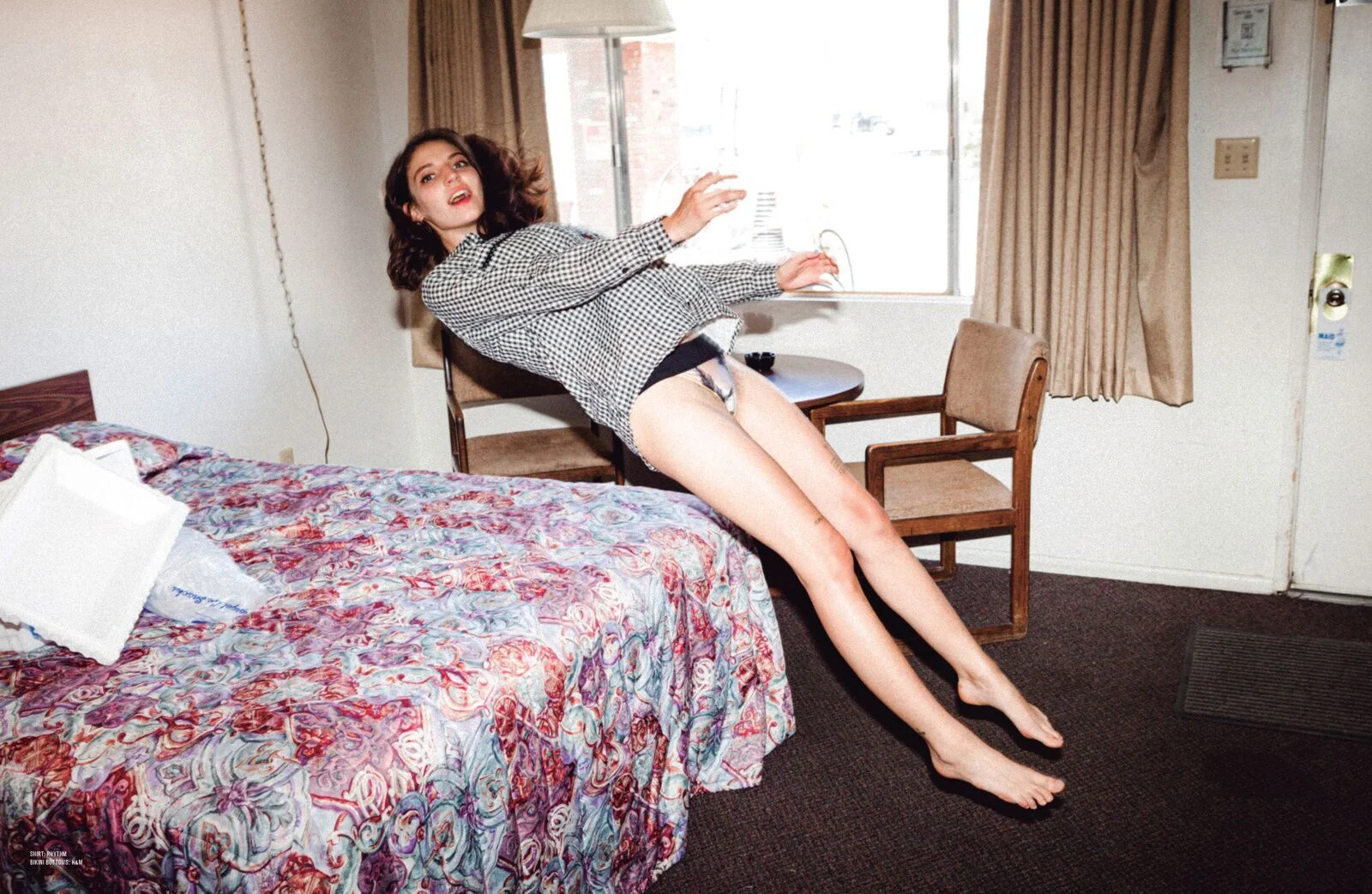

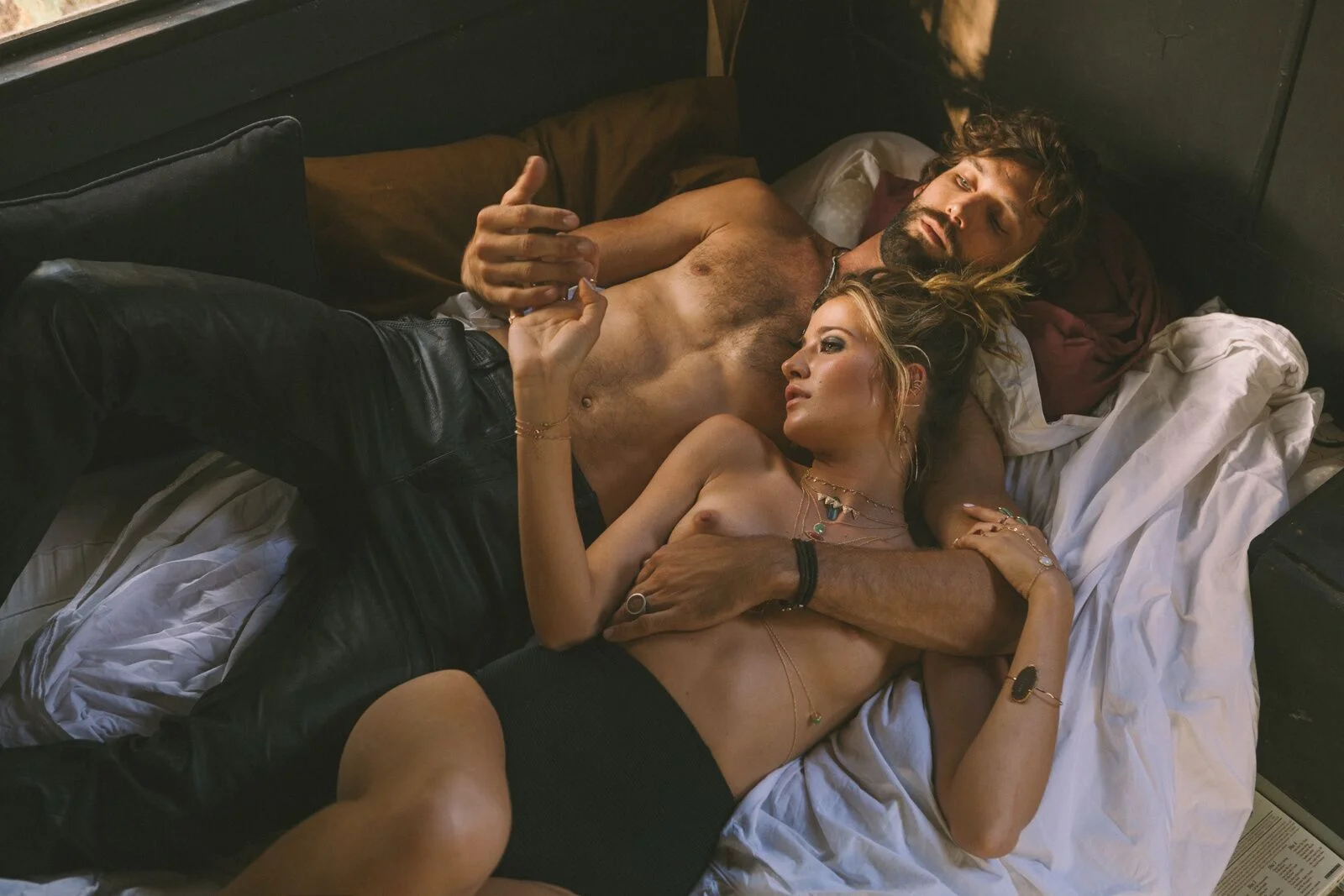
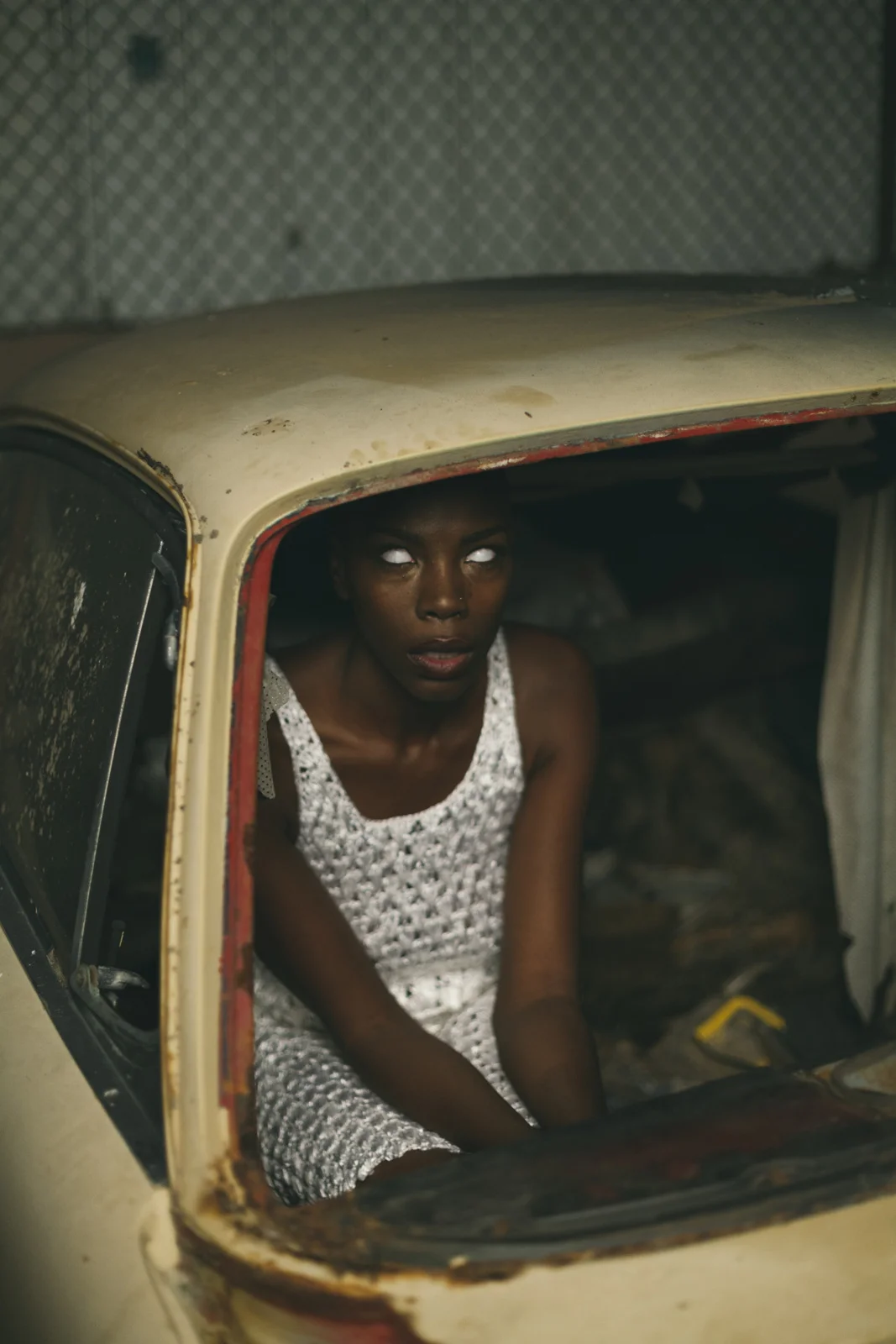
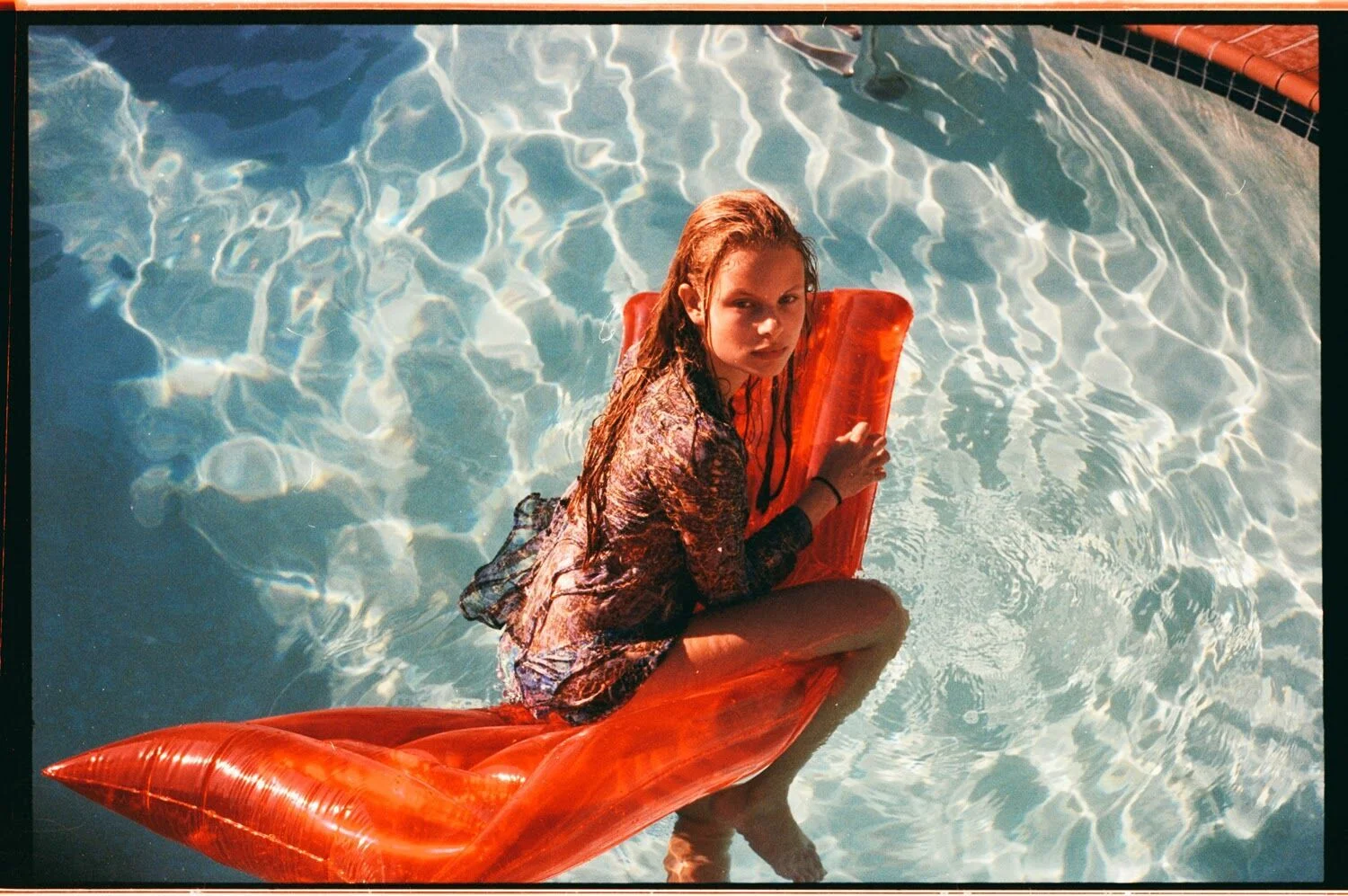
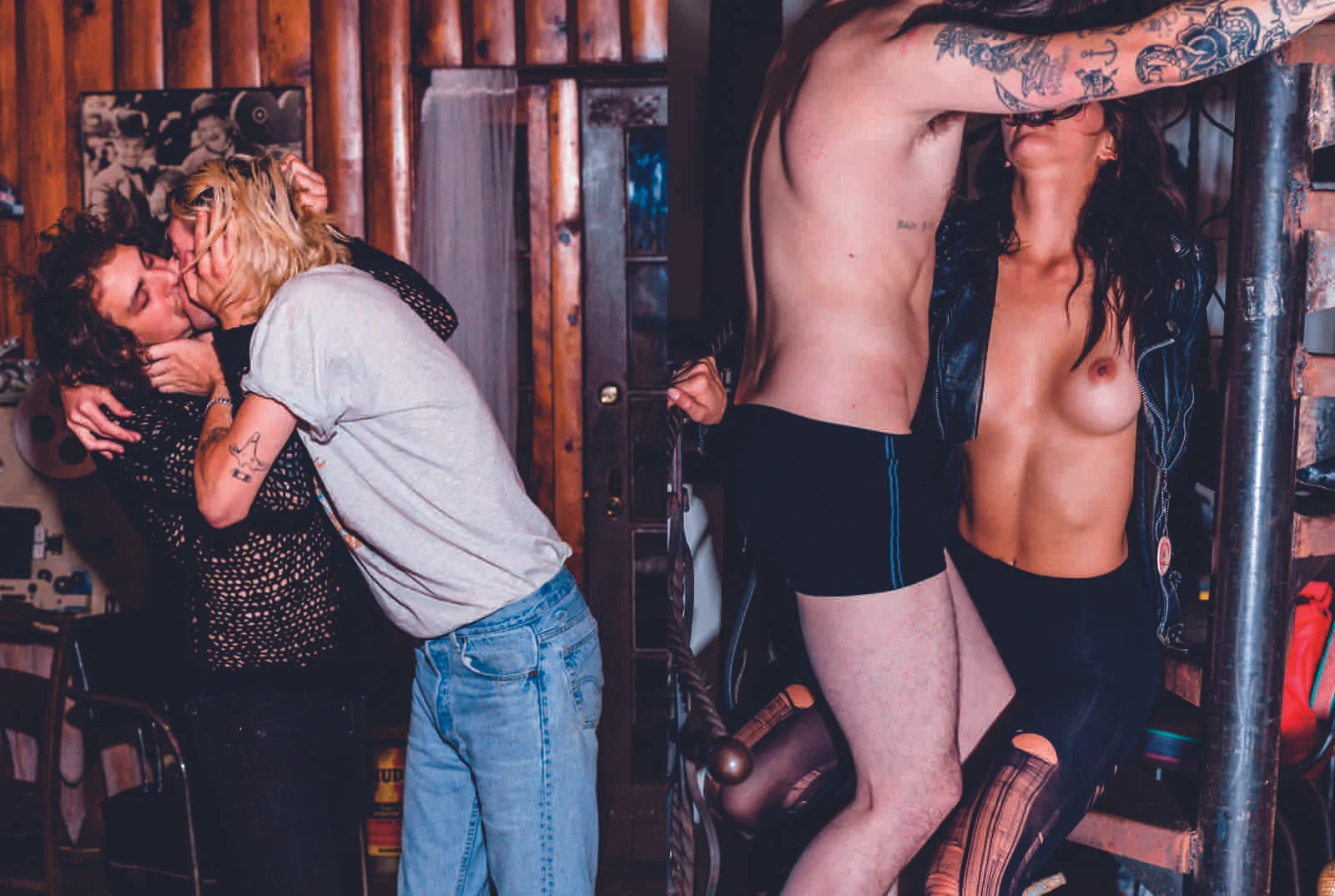
[](#)[](#)
Ward Robinson doesn’t want you to try too hard
The photographer and Animals Magazine founder on his unique aesthetic and fake intimacy in photos
Ward Robinson is the black sheep. While other members of his family chose more societally upstanding life roles like “financial guy” or “SF MoMA Chairman of the Board,” Ward took 47 hits of acid before he could vote and started drumming for plural punk bands. His sister, also known as “Mom” to some, did not approve, his Mom, also known as “Mom” to some, did not approve, and the rest of his family? You guessed it.
Decades of this went by until sobriety and boredom began to direct his interest towards photography; which was, ironically, the family legacy. Eventually, he couldn’t ignore that art is in his blood. Growing up, he had a front row seat to the minimalist movement thanks to his father, who designed the interior of the old SF MoMA and sat as the aforementioned Chairman of the Board for both there and SFAI. Throughout his childhood, his parents filled his house with minimalist art—Judd, Martin, DeWitt, Mangold—and his sister even sat for Mapplethorpe.
So, when the band thing dried up, Ward went full on-photography. In doing that, he created a distinct photographic aesthetic informed by his upbringing and the two things he loves most aside from music: girls and cars.
Looking at Ward’s photos is like voyeuristically stalking the lazy moments in the lives of the world’s most beautiful women. None of them seem to be posing for him though. Instead, they’re seething, reflective, alive, and mobile, vibrating with the awareness that the man photographing them is looking past their perfect figures into in search of the kind of spark that only comes from soul.
But since beauty can bore, he likes to pair his angels with brutality and the kind of unladylike sexual savagery that would definitely be grounds for cotillion removal. S&M, voodoo, severed animal heads, psychedelia and the general cosmetic of engorged machismo pushing an erection skywards through tight leather pants pervades. The end product feels a bit like like a pinup girl bleeding; disturbingly beautiful, yet entirely humanizing. His gorgeous biannual men’s magazine Animals, now on its second issue, is the final resting place of these efforts.
Even his commercial work retains the same intensity. Though cleansed of the same alluring depravity of his personal projects, Ward is still able to impose his own brand of black magic into photos meant to sell or convince. Through a compulsion with line and light, he underscores how the mundane can actually be quite alien.
We went to his broiler/ house in Echo Park where we sweated profusely as he revealed the impact of minimalism on his work, how he orchestrates beauty and perversion, and how those things help him tell a story of vulnerability in his work. Extra-special bonus: life advice for photographers who try too hard.
**Okay, let’s start with your fabled origin story. How did you get into photography?**
I used to tour in kind of grimy punk bands and we would play 40 minutes in some show in some town I'd never been to and I wouldn't know anybody and I'd be bored. So, I would just go around with a camera and started taking pictures of stuff. The only reason I was even doing that at was that I thought it was fun to sneak my camera into shows. I had this little Contax T3 and I would stick it in my pants to get to get through security. Then I found out that if I reached out to music magazines, security would just let me take my big camera in and I wouldn't have to hide it. It was just easier. By the time I stopped playing drums later on, I'd been taking pictures for a while and I had a few clients by then so I just started doing that instead.
**You also grew up in a an incredibly photography-forward household. Was there a photographer you encountered growing up that made you want to pick up a camera?**
William Eggleston, my favorite photographer. He changed the game. He made everything that I do possible. He's a champion of color photography, but his stuff is not romantic at all. It's just “this is what it is.” He does these completely off hand snapshots and yet everything inside the frame feels like it was put there by a master painter because it's so purposeful and so beautiful, so balanced, and yet there's tension. He's not afraid of any subject matter. It’s dynamic visually, and psychologically, and that created Terry Richardson and Juergen Teller and in some ways Nan Goldin. When Eggleston came along, people thought he sucked. His stuff didn't look like traditional photography. It didn't look like somebody had tried hard. It didn't look hard. It is so fucking hard to do that. To do what he does and make it look effortless and like a mistake and make it dynamic and do that consistently, is god damn near impossible. The guy's a crazy genius.
**How did that affect your own aesthetic?**
That sort of snapshot aesthetic, that feeling of staged freedom which I love that, comes initially from the language of Eggleston saying color's important, the everyday is important. The mundane is dynamic and beautiful. All that stuff and we can use an on camera flash and it doesn't have to look lit by an old master painter. When I first saw those things I was really relieved that I could do something that felt compelling to me and not fussy, because I don't like that in any way.
**I've seen you direct and it's quite amazing. How do you get people to do these insane things in in wild scenes without making them feel uncomfortable?**
I try to work with people that I have a sense are already kind of off kilter. For me that's most what the casting process is about. Looking in somebody's eyes and seeing if they're adventurous.
**How can you tell?**
You can tell if they're not. If somebody's just there because they want to be on a Disney show one day and they think they're trying to use whatever you're doing in order to get famous, I've got no use for that person at all. I'm just going to put them in something that makes them feel uncomfortable situation. It won't work well for anybody. Just because somebody likes to be in front of the camera doesn't mean that they're vapid. There are a lot of people who like to be in front of the camera who are weirdos too, and those are the people I try to cast.
**What story are you looking to tell with your photos?**
Essentially, I'm creating a fake relationship. Ideally if the pictures are really good and I've done what I want to do, it looks like there's a real intimacy and that there's a natural intimate situation with that person, and in reality, that's a total hoax. I guess I'm trying to tell a story of intimacy or being vulnerable to somebody. By far the most compelling images to me is where there's vulnerability there.
**How do create vulnerability? Are there any other photographers you think do a good job of that?**
For my pictures, it's probably a fake vulnerability. For pictures in general, I hope some of it's real. Nan Goldin's stuff is real. That's a real intimacy. She's writing a diary with her pictures. A lot of Eggleston's stuff is a real intimacy. Those are huge heroes of mine. Catherine Opie's stuff's got some real intimacy in it, even though a lot of that stuff is staged and studio-ey. That kind of stuff, I'm interested in vulnerability and intimacy in general, so if you can make something that's dynamic to look at that includes those elements, it's way more powerful to me than just something that's visually dynamic without that element.
**Does that drive towards vulnerability have anything to do with the S&M elements in some of your photos?**
Yeah. That's a really easy tool to use to convey that sort of vulnerability, because obviously if somebody's really allowing you to do that, they trust you. All that said, those things, if they don't exist within a frame, a composition, with light that moves me, none of it's worth it. Piss. I don't care about it. I feel in a lot of ways I'm always trying to make the same picture in terms of the way that line and light are portrayed. That's easily as important as any of the human content.
**Can you tell me a little bit more about that? What are you looking for in terms of light and line?**
It's hard to put into words, which is probably why I have to take pictures, because if I could just say it, nobody would need to see it. I was raised around a lot of minimalists painting, and Ray Mangold's stuff and Ellsworth Kelly's stuff and they had a lot to do with what I'm looking for. I think visually that's part of the language that I have, which is trying to create some sort of tension inside of a rectangle with some lines and a lot of times it's easier to do that with limbs.
**When you're thinking of this stuff, and you're thinking about the line and the light, do you have a mental Rolodex of ideas that you want to shoot? Are you constantly thinking of places and models and positions and feelings or is it more organic and in the moment that something happens and is striking to you?**
I think it happens in the moment more. I do plan things out as much as I can, but if all I get is the feeling that the photo was a natural occurrence and somehow compelling in terms of the feeling of the photo, I feel pretty good about that. The last thing I want is a photo that feels like I made it. For me it's easy to use cars and sunsets and on-camera flash in ways that don't feel like those things are gimmicky. Almost every time I shoot, somebody asks me what the concept is. I don't have an answer. I don't have a concept. I just want things to feel real and if you say that that's the concept to somebody, they don't know what you're talking about. Then I end up saying we're going to drive to Malibu in a car. “I'm going to drive 4 hours down Route 66 with your model,” is what I tell an agency. “It will be fine. Don't worry about it. The pictures are going to be good, I swear to god.” That's about as much concepting as I do.
**Do you have any advice for people who are trying the elicit the same form and vulnerability as you?**
Don’t try so fucking hard to make your shit important. It’s just a picture. When people try too hard to make photos that they think are "good,” those pictures end up being really lifeless. Fussiness creates lifelessness. Don’t be a pussy.
